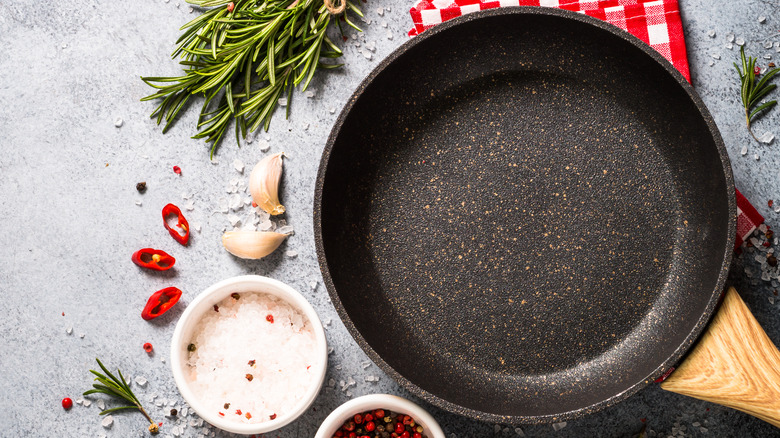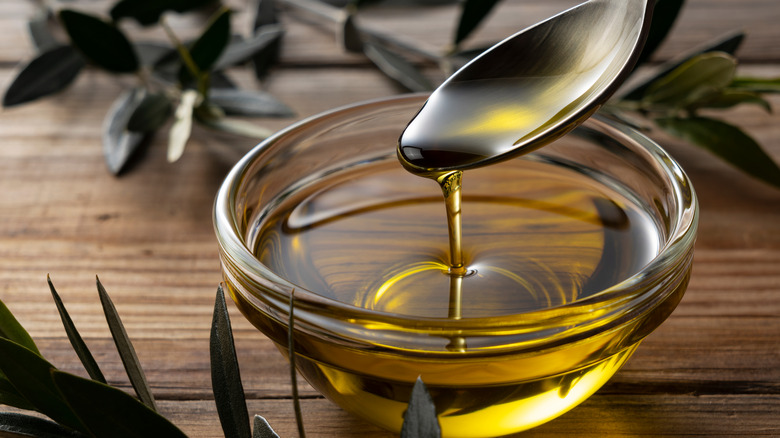Why You Should Heat Your Skillet Before Adding Oil To It
Two things are foundational to much of modern cooking: Heat and oil. These elements are the basis for many of our cooking techniques and most recipes start with the application of a skillet and oil to a stovetop (per Kitchn). Stir frying, sautéing, pan frying, and searing are all fundamental techniques that are about how we add food to a hot pan with oil or other fats like butter.
Using heat and oil properly is also important to generating a good Maillard reaction. The Maillard reaction is what's responsible for creating a beautiful crust and complex flavors on say, a properly seared steak, that gives it a dark brown, almost caramelized crust rather than just turning out limp and gray as though it were boiled (via Serious Eats). The Mailliard reaction is a complex process that occurs only when the proteins and sugars in food are exposed to high heats and can often be the difference between a wonderful home-cooked meal and a lackluster one. Understanding how heat and oil interact is thus incredibly important and there are plenty of tricks to getting it right — including adding your oil at the right time.
When to add the oil
Adam Richmond told People he recommends "heating your pan then adding oil to it. The longer oil sits on the surface, the more time it has to break down." When speaking of the oil "breaking down," Richmond is referring to it reaching its smoke point. All oils and fats have a smoke point, or temperature where the oil begins burning and breaking down, releasing smoke as well as chemicals that can impart bitter and burnt flavors in your food (via Masterclass). The smoke point of fats varies widely; coconut oil will start breaking down around 350 degrees while other oils like safflower can exceed 500 degrees, per Serious Eats.
Another benefit to adding oil to a hot pan comes from reducing how much the food sticks. As smooth as your pan may look, the cooking surface is coated in microscopic imperfections that will change as the metal expands during the heating process. Allowing the pan to warm will let the oil flow into the cracks of this microscope landscape (via About Olive Oil). This will create a more even coating of oil that will in turn help the food cook evenly. It may seem insignificant but adding oil to the pan at the right time is a simple trick that can elevate your cooking skills.

